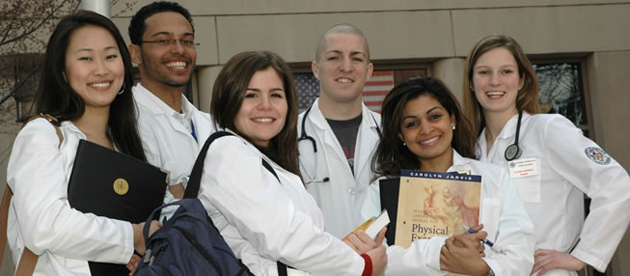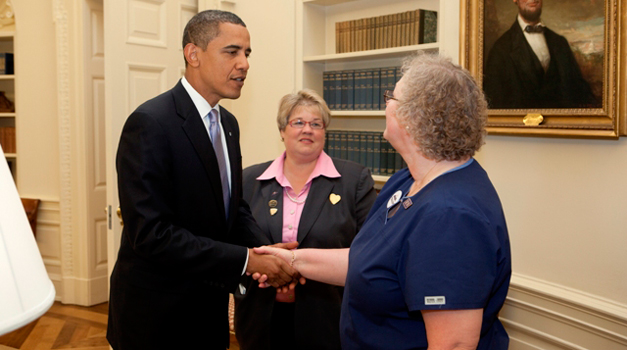Nursing Practice: Challenges Today

Diversity in the School of Nursing’s student body was evident in this 2009 photo.
Nursing Challenges: Diversity
Over the last 50 years, the nursing field has grown more diverse. By 2010, males and underrepresented minorities made up five and 10 percent of the American nursing population, respectively. The School of Nursing continued to strive to meet the demands of 21st century nursing through a diverse student body that was representative of both the state and the nation. In 2010, 37 percent of students were from underrepresented minorities and 12 percent were men. While these numbers exceeded the national average, nursing professionals continued their efforts to emphasize diversity to better represent the demographics of the United States.

In summer 2009, Rebecca Wiseman, PhD, RN, (right) assistant dean for the School of Nursing’s program at the Universities of Shady Grove, was chosen by the American Nurses Association to represent nurses at a White House press conference on health care reform and the nurse shortage. President Barack Obama was so impressed with the nurses that they were invited back to the White House in September 2009.
Nursing Challenges: Nurse and Nursing Faculty Shortage
During the 2000s, the School of Nursing increased enrollment by more than 35 percent in response to Maryland’s shortage of entry-level and advanced practice nurses and faculty members. In 2008 and 2011, the School received funding through Maryland’s Nurse Support Program II, an initiative led by Dean Allan, to increase the number of Master of Science and Doctor of Nursing Practice graduates eligible to become faculty members. The School’s Student Success Center, launched in 2010, offered tutoring, study sessions, and workshops aimed at increasing graduation rates by lowering the dropout rate among students having academic difficulties.